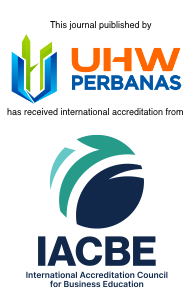Submissions
Submission Preparation Checklist
All submissions must meet the following requirements.
Authors are invited to make a submission to this journal. All submissions will be assessed by an editor to determine whether they meet the aims and scope of this journal. Those considered to be a good fit will be sent for peer review before determining whether they will be accepted or rejected. Before making a submission, authors are responsible for obtaining permission to publish any material included with the submission, such as photos, documents and datasets. All authors identified on the submission must consent to be identified as an author. Where appropriate, research should be approved by an appropriate ethics committee in accordance with the legal requirements of the study's country. An editor may desk reject a submission if it does not meet minimum standards of quality. Before submitting, please ensure that the study design and research argument are structured and articulated properly. The title should be concise and the abstract should be able to stand on its own. This will increase the likelihood of reviewers agreeing to review the paper. When you're satisfied that your submission meets this standard, please follow the checklist below to prepare your submission.
Submission Preparation Checklist
All submissions must meet the following requirements.
- ATTENTION!! For the blind-review process, DO NOT INCLUDE THE AUTHOR's NAME IN THE ARTICLE. Follow the author guidelines in the separate Author section as per the OJS form. If the author's name is still found in the article, it will hinder the review process and most likely will not be processed further. This submission meets the requirements outlined in the Author Guidelines.
- This submission has not been previously published, nor is it before another journal for consideration.
Double submission—submitting the same article to more than one journal at the same time—is strictly prohibited in academic publishing due to ethical reasons and the risk of significant negative consequences for authors. If detected, one or both journals may retract the published papers, banning the author from future submissions to those journals and potentially alerting other journals or the author's institution to the misconduct.
- All references have been checked for accuracy and completeness. All tables and figures have been numbered and labeled. Research articles are not research reports. Avoid copying and pasting statistical test results directly into the article. If possible, create a descriptive summary that is easy to read. To record cross-citation data, you must include the DOI for the references you cite in the reference list.
Copyright Notice
Authors who publish with this journal agree to the following terms:
The author agrees to transfer the copyright of the article to The Indonesian Accounting Review journal after the research article is accepted for publication. This transfer includes first publication rights, reproduction, distribution, and communication of the article in all existing and future forms and media. In this case, the author must make a copyright transfer statement to the publisher.
The author grants first publication rights to the journal with work simultaneously licensed under the Creative Commons Attribution License. This allows others to share the work with acknowledgment of authorship and initial publication in this journal.
The author guarantees that: This article is original work and has not been published elsewhere, and is not under consideration for publication in another journal. The article does not infringe any existing copyright or other third-party rights. All necessary permissions for the use of copyrighted material have been obtained. All authors have contributed significantly to the research and approve the final version of the manuscript to be published.
Authors are permitted to: Use the article in their own teaching and research activities, store the article in personal or institutional repositories after publication, with proper citation to the journal, and reuse images, tables, or quotations from the article in future works, with appropriate acknowledgment.
This journal provides immediate open access to its content on the principle that making research freely available to the public supports a greater global exchange of knowledge.
All articles published Open Access will be immediately and permanently free for everyone to read and download. We are continuously working with our author communities to select the best choice of license options, currently being defined for this journal as follows:
This journal is published under the terms of the Creative Commons Attribution 4.0 International License
Privacy Statement
Our Privacy Policy
Information we collect
We collect information about you in three ways: directly from your input, from third-party sources, and through automated technologies.
Information you provide to us
The types of personal information that we collect directly from you depends on the content and features of the Service you use and how you otherwise interact with us and may include:
- Contact details, such as your name, email address, postal address, phone number and social media handle;
- Account login credentials, such as usernames and passwords, password hints and similar security information;
- Other account registration and profile information, including educational, professional and other background information, such as your field of study, current position, practice area and areas of interests, gender, ORCID ID and photo;
- Content that you upload and share or store in your account, such as annotations, comments, contributions and replies;
- Information that you communicate to us, such as questions or information you send to customer support;
- Data that you provide to us as part of interacting with the Service, such as your favorites and search queries; and/or
- Communications preferences, such as your preferred language and the frequency, type and format of the alerts you sign up to receive.
Device and usage data
We collect this data through our servers and the use of cookies and other technologies. You can control cookies through your browser's settings and other tools. However, if you choose to block certain cookies, you may not be able to register, login, or access certain parts or make full use of the Service. For more details, visit the cookie notice of the Service.
How we use your information
We are committed to delivering a relevant and useful experience to you. Depending on how you interact with us and the Service, we use your personal information to:
- Provide, activate and manage your access to and use of the Service;
- Process and fulfill a request, order, download, subscription or other transaction;
- Offer you customized content and other personalization to make the Service more efficient for you and more relevant to your interests and geography;
- Enhance and improve the Service, such as add new content and features;
- Notify you about changes, updates and other announcements related to the Service;
- Deliver targeted advertisements, promotional messages, and other information related to the Service and to your interests;
- Provide technical, product and other support and help to keep the Service working, safe and secure; and/or
- Identify usage trends and develop data analysis, including for the purposes of research, audits, reporting and other business operations, such as to pay royalties and license fees to third-party content providers, determine the effectiveness of our promotional campaigns, evaluate our business performance, or in other ways pursuant to a customer agreement.
We may also use your personal information to:
- Respond to your requests, inquiries, comments or concerns;
- Invite you to submit or review manuscripts or otherwise participate in our publishing programs;
- Comply with our legal obligations, resolve disputes and enforce our agreements.
Data security
We take precautions to safeguard your personal information against loss, theft and misuse and unauthorized access, disclosure, alteration and destruction through the use of appropriate technical and organizational measures.

















